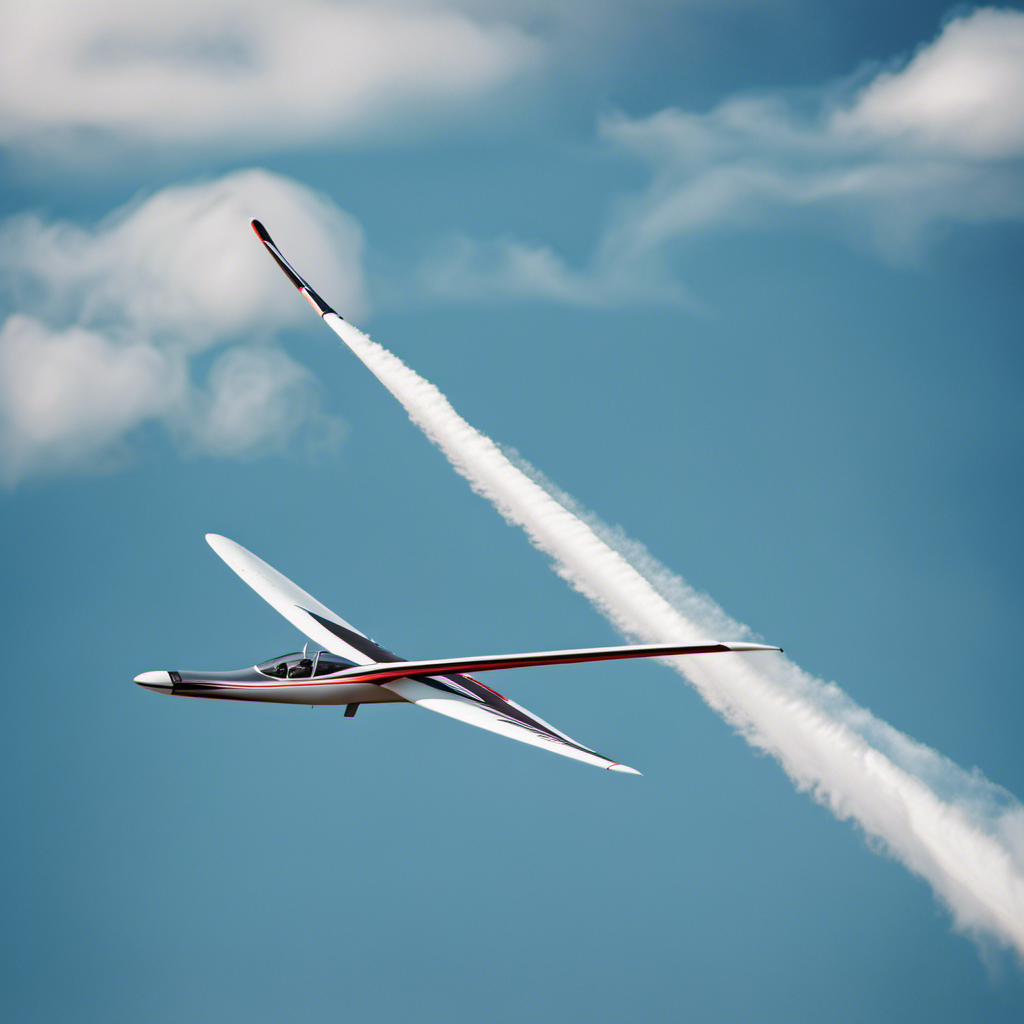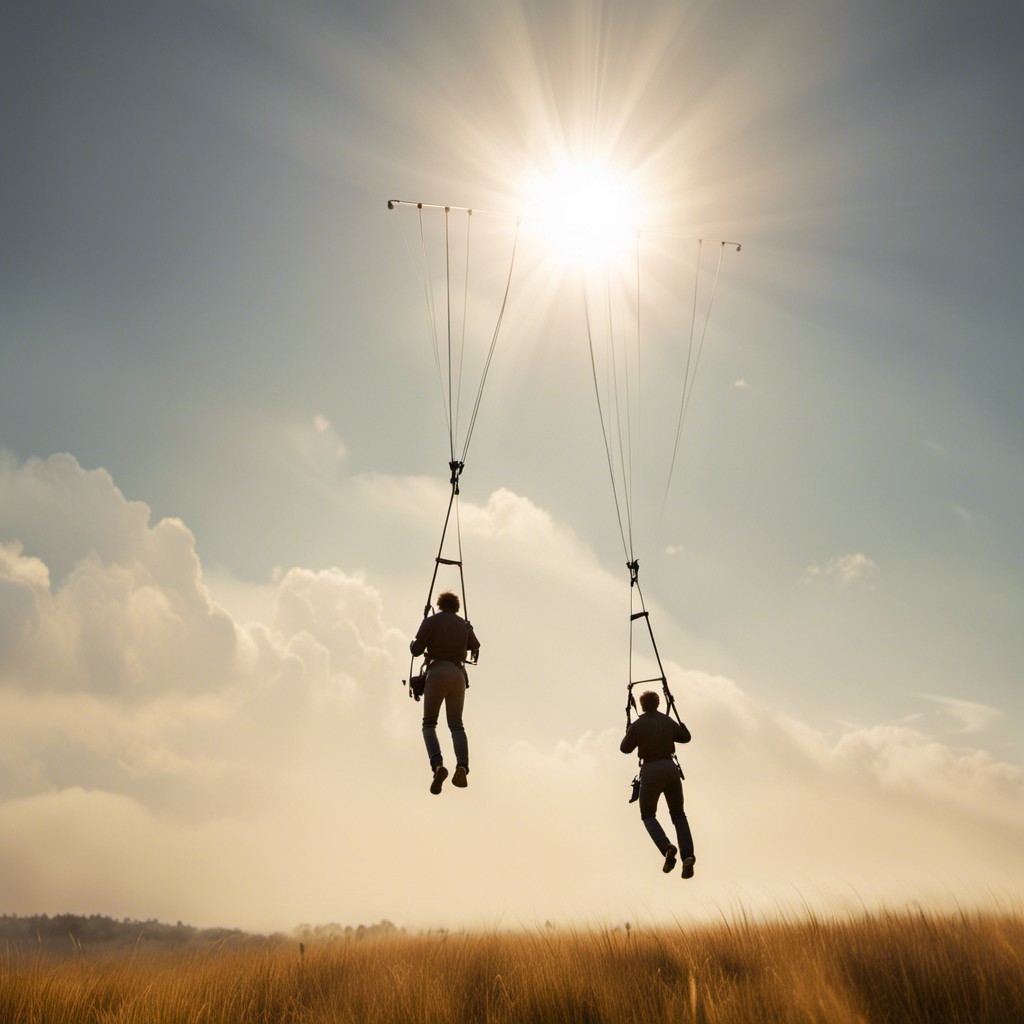Let me share an intriguing aspect of the influence of air in motion. It transcends the mild coolness of a breeze or the powerful rush of a strong wind; it’s a force that profoundly affects our existence in various aspects.
From cooling and ventilation to weather patterns and climate, the science behind moving air is a complex web of interconnected factors.
Join me as we explore the profound influence of moving air on agriculture, outdoor recreation, sports, and even air pollution.
Get ready for an eye-opening journey into the invisible power that surrounds us every day.
Key Takeaways
- Moving air has a cooling effect and enhances evaporation of sweat, leading to increased thermal comfort.
- Natural ventilation improves indoor air quality, reduces energy consumption, and lowers costs.
- Wind shapes weather patterns and influences the behavior of clouds, storms, and erosion.
- Wind plays a vital role in agriculture, including pollination, seed dispersal, crop protection, and water distribution in fields.
The Science Behind Moving Air
To understand the science behind moving air, you need to grasp concepts such as air pressure and fluid dynamics.
Air pressure is the force exerted by the weight of air molecules on a surface. When air is in motion, it creates areas of high and low pressure. This difference in pressure is what drives the movement of air.
Aerodynamics, on the other hand, is the study of how air flows around objects. By understanding the principles of aerodynamics, we can design more efficient and streamlined structures that minimize air resistance.
This knowledge is crucial when it comes to cooling and ventilation, as it allows us to create airflow patterns that effectively distribute cool air and remove hot air, creating a comfortable and well-ventilated environment.
Cooling and Ventilation
When it comes to cooling and ventilation, the cooling effect of moving air is an important factor to consider.
Natural ventilation in buildings can help to achieve this cooling effect by allowing fresh air to circulate and replace stale air.
The benefits of fresh air circulation go beyond just cooling, as it can also improve indoor air quality and create a more comfortable and healthy environment.
The Cooling Effect of Moving Air
You can feel a refreshing breeze when you sit near a fan or open window. Air movement plays a crucial role in temperature regulation, as it helps to dissipate heat and increase thermal comfort. When air moves across our skin, it enhances the evaporation of sweat, making us feel cooler. This is known as the wind chill effect.
Moreover, air movement promotes the mixing of air layers, preventing stagnant pockets of hot air from forming. By improving air circulation, we can enhance the effectiveness of natural ventilation in buildings. Natural ventilation relies on wind pressure and temperature differences to drive airflow, bringing fresh outdoor air indoors and removing stale air.
The combination of air movement and natural ventilation is essential for maintaining a comfortable and healthy indoor environment.
Natural Ventilation in Buildings
Improving air circulation in buildings through natural ventilation enhances the effectiveness of thermal comfort and promotes a healthy indoor environment.
Natural ventilation techniques, such as cross ventilation, play a crucial role in achieving these benefits. Cross ventilation is a method that utilizes pressure differences and wind to move air through a building. By strategically placing openings on opposite sides of a space, fresh air can enter and stale air can exit, creating a continuous flow of air.
This technique not only improves indoor air quality by reducing pollutants, but it also helps to regulate temperature and humidity levels. The movement of air through cross ventilation can effectively cool a building, reducing the reliance on energy-consuming cooling systems.
This transition into the subsequent section about the benefits of fresh air circulation highlights the importance of natural ventilation in maintaining a healthy and comfortable indoor environment.
Benefits of Fresh Air Circulation
The benefits of fresh air circulation in buildings are numerous. It includes improved indoor air quality and enhanced thermal comfort.
Fresh air circulation helps to remove pollutants such as volatile organic compounds (VOCs), carbon dioxide, and airborne particles, which can have a detrimental impact on respiratory health. It decreases the levels of indoor pollutants.
Breathing in clean, fresh air can reduce the risk of respiratory issues such as allergies, asthma, and respiratory infections. It improves respiratory health.
Studies have shown that proper ventilation and fresh air can lead to improved cognitive function, concentration, and productivity levels in occupants. It increases productivity.
Fresh air circulation can help regulate temperature and humidity levels, creating a more comfortable environment for building occupants. It enhances thermal comfort.
By incorporating natural ventilation systems, buildings can reduce the need for mechanical cooling and heating, leading to energy savings and lower utility costs. It reduces energy consumption.
Fresh air circulation not only benefits our health and well-being but also has a positive impact on productivity.
Now, let’s explore the influence of weather patterns and climate on indoor air quality.
Weather Patterns and Climate
As a meteorologist, I’m fascinated by the profound impact that wind has on weather systems. The movement of air plays a crucial role in shaping our climate and can even contribute to climate change.
Understanding how wind patterns shape regional climates is essential for predicting weather patterns and studying long-term climate trends.
Wind’s Impact on Weather Systems
Wind’s impact on weather systems can be significant, as it influences the movement and behavior of clouds, storms, and other atmospheric phenomena. The role of wind in weather patterns is well-documented and understood by meteorologists.
Here are some key points to consider:
-
Wind plays a crucial role in the formation and intensity of hurricanes. The strong winds associated with hurricanes can cause widespread destruction and loss of life.
-
Wind also plays a significant role in erosion. The constant movement of air can transport particles and erode surfaces over time.
-
Wind patterns are influenced by various factors such as temperature gradients, pressure systems, and the Earth’s rotation.
-
Wind speed and direction are measured using anemometers and are an essential component of weather forecasting.
-
Wind can affect local weather conditions by bringing in air masses from different regions, leading to changes in temperature, humidity, and precipitation.
Understanding the impact of wind on weather systems is crucial for predicting and managing weather-related events. However, wind’s influence extends beyond weather patterns and plays a vital role in climate change.
The Role of Air Movement in Climate Change
As we have seen, wind plays a crucial role in shaping weather systems. But its impact goes beyond just weather. In fact, the movement of air has a significant influence on climate change as well. One of the ways wind affects climate is through its role in transportation. Wind is responsible for moving heat and moisture across the Earth’s surface, redistributing them and influencing regional climates. Additionally, wind plays a key role in ocean currents, which have a profound impact on global climate patterns. To illustrate the importance of wind in climate change, consider the following table:
| Role of Wind in Transportation | Wind’s Impact on Ocean Currents |
|---|---|
| Transports heat and moisture | Influences global climate patterns |
| Affects regional climates | Drives circulation of ocean water |
| Influences weather systems | Regulates temperature and salinity |
| Facilitates exchange of gases | Impacts marine ecosystems |
| Influences carbon cycle | Shapes ocean nutrient distribution |
Understanding the role of wind in transportation and its impact on ocean currents is essential for comprehending how wind patterns shape regional climates.
How Wind Patterns Shape Regional Climates
To understand how wind patterns shape regional climates, you should consider the influence of wind on temperature and moisture distribution.
Regional wind patterns are a key component of atmospheric circulation, which plays a crucial role in determining climate patterns. These wind patterns are influenced by a variety of factors, including the rotation of the Earth, the distribution of land and water, and the presence of mountain ranges.
As air moves across different regions, it can carry with it varying amounts of moisture and heat, leading to distinct climate patterns. For example, winds blowing from the ocean onto coastal areas can bring cooler temperatures and higher levels of moisture, while winds moving from inland areas can bring drier and warmer conditions.
Understanding these regional wind patterns is essential for predicting and adapting to climate variations, including their impact on agriculture.
Impact on Agriculture
As a farmer, I’ve come to understand the vital role that wind plays in agriculture.
One key aspect is its impact on pollination and seed dispersal. Wind, with its ability to carry pollen grains over long distances, plays a crucial role in the reproduction of many crops.
Additionally, windbreaks serve as a protective barrier against strong winds, reducing crop damage and enhancing crop productivity.
Lastly, understanding wind patterns can help optimize watering and irrigation practices. Wind can affect evaporation rates and the distribution of water across fields.
Overall, wind is an essential factor in the success of agricultural practices.
Pollination and Seed Dispersal
Pollination and seed dispersal are crucial processes for the reproduction and survival of many plant species. Pollinators, such as bees and butterflies, play a vital role in flower reproduction by transferring pollen. This allows for fertilization and the formation of seeds.
Dispersal mechanisms ensure the survival and expansion of plant populations. Plants have developed various methods to disperse their seeds, including wind, water, and animal dispersal. Wind dispersal is an important mechanism for plant survival. It allows seeds to be carried away from the parent plant, increasing their chances of finding suitable conditions for germination and growth.
Understanding the intricate relationship between pollinators, seed dispersal, and plant survival is essential for conservation efforts and maintaining biodiversity.
Moving on to windbreaks and crop protection, wind plays a significant role in shaping agricultural landscapes.
Windbreaks and Crop Protection
Windbreaks provide protection for crops by reducing the negative impact of strong winds on plant growth and development. Their effectiveness is influenced by various factors, including windbreak design. A well-designed windbreak can significantly decrease wind speed and turbulence, creating a more favorable microclimate for crops. To illustrate this, I have prepared a table showcasing the effects of different windbreak designs on wind speed reduction:
| Windbreak Design | Wind Speed Reduction |
|---|---|
| Single Row | 30-50% |
| Double Row | 50-60% |
| Triple Row | 60-70% |
| Solid Barrier | 70-90% |
| Porous Barrier | 50-70% |
As shown in the table, windbreak effectiveness increases with the number of rows and the density of the barrier. These findings highlight the importance of careful windbreak design in maximizing crop protection. Understanding the impact of wind on crops is crucial for efficient irrigation practices, which will be discussed in the next section.
Wind’s Effect on Watering and Irrigation
Wind’s impact on watering and irrigation can be significant. It can cause water to evaporate more quickly and unevenly, leading to potential water stress for crops. When wind blows across plants, it increases the rate of transpiration, resulting in higher water loss from the leaves. This can lead to decreased soil moisture levels, affecting plant growth and health.
Additionally, strong winds can disrupt the uniform distribution of water during irrigation. This causes uneven wetting patterns and potential waterlogging in some areas. To mitigate wind’s effect on gardening and plant growth, implementing windbreaks or shelterbelts can provide protection and reduce wind speed. These structures can minimize water evaporation, maintain soil moisture, and create a more favorable microclimate for plants.
Transitioning to the next section, wind also plays a significant role in outdoor recreation and sports.
Outdoor Recreation and Sports
As someone who has always been fascinated by the power of the wind, I am particularly drawn to the thrill of wind sports such as sailing and paragliding.
The sheer force of the wind propelling me forward, combined with the skill and precision required to navigate through the elements, creates an exhilarating experience like no other.
Additionally, the influence of wind on other outdoor activities such as surfing and kiteboarding cannot be understated, as it directly affects the speed, direction, and overall dynamics of these sports.
Understanding the conditions and characteristics of windy environments is crucial for anyone engaging in outdoor activities, as it can greatly enhance or challenge the overall experience.
The Thrill of Wind Sports, such as Sailing and Paragliding
The thrill of wind sports, like sailing and paragliding, is hard to describe. As someone who has experienced the rush firsthand, I can attest to the incredible adrenaline rush that comes from harnessing the power of the wind.
Here are four reasons why wind sports provide such a thrilling experience:
-
Speed: Wind sports allow you to reach exhilarating speeds, whether you’re gliding across the water in a sailboat or soaring through the sky with a paraglider.
-
Freedom: The feeling of being propelled by the wind gives you a sense of freedom and control over your movements, allowing you to explore new horizons.
-
Physical challenge: Wind sports require strength, agility, and quick reflexes, making them physically demanding and mentally stimulating.
-
Connection with nature: Engaging in wind sports allows you to connect with the natural elements, feeling the wind on your face and the water beneath your feet.
With the excitement and rush experienced in wind sports, it’s no wonder that wind’s influence on surfing and kiteboarding is equally captivating.
Wind’s Influence on Surfing and Kiteboarding
Surfing and kiteboarding are two popular water sports that are greatly impacted by the power of the wind. To understand the influence of wind on these sports, it is important to consider the techniques used in surfing and the equipment used in kiteboarding.
In surfing, the wind plays a crucial role in creating waves. The wind generates swells that travel across the ocean, eventually reaching the coastline and transforming into rideable waves. Surfers rely on the wind to determine the size, shape, and quality of the waves, as well as the direction in which they break. By understanding how the wind interacts with the ocean, surfers can choose the most suitable spots and timing for their sessions.
On the other hand, kiteboarding depends on the wind for propulsion. Kiteboarders use a large kite to harness the wind’s power and glide across the water’s surface. The wind speed and direction directly impact a kiteboarder’s ability to gain speed, perform tricks, and maintain control. Additionally, kiteboarding equipment, such as kite size and board type, is selected based on wind conditions to optimize performance and safety.
To better visualize the impact of wind on surfing and kiteboarding, consider the following table:
| Surfing Techniques | Kiteboarding Equipment |
|---|---|
| Wave selection | Kite size |
| Paddling | Board type |
| Positioning | Harness |
| Timing | Control bar |
Understanding these techniques and equipment choices is essential for riders to maximize their experience and safety in varying wind conditions. As we delve into the subsequent section about windy conditions for outdoor activities, we will explore how wind affects other sports and recreational pursuits.
Windy Conditions for Outdoor Activities
When it’s windy outside, outdoor activities can become more challenging and require careful consideration of safety measures. Windy conditions can significantly impact various outdoor activities, affecting both performance and safety. To ensure an enjoyable and safe experience, it is essential to understand the effects of wind on different activities.
Here are three key considerations when engaging in outdoor activities in windy conditions:
-
Wind direction: Assessing the wind direction is crucial as it can affect the trajectory of projectiles, such as balls or frisbees, and influence the stability of objects like tents or umbrellas.
-
Wind speed: Monitoring wind speed is important, especially for activities like sailing or paragliding, where excessive wind speeds can lead to unstable conditions or even accidents.
-
Protective gear: Wearing appropriate protective gear, such as helmets or goggles, can help mitigate the risks associated with windy conditions during activities like cycling or skiing.
Understanding these factors will enhance safety and enjoyment when participating in outdoor activities in windy conditions.
As we transition to the subsequent section about air pollution and filtration, it is important to consider the impact of wind on the dispersion and concentration of pollutants in the air.
Air Pollution and Filtration
As an expert in air pollution and filtration, I am excited to discuss three important topics: the dispersion of air pollutants, the use of wind turbines for clean energy, and the role of air filtration systems in maintaining indoor air quality.
The dispersion of air pollutants refers to how these harmful substances spread in the atmosphere, posing a threat to both human health and the environment.
Wind turbines have emerged as a sustainable solution for generating clean energy, harnessing the power of wind to reduce reliance on fossil fuels.
Additionally, air filtration systems play a crucial role in removing pollutants from indoor spaces, ensuring that the air we breathe is clean and safe.
Dispersion of Air Pollutants
The dispersion of air pollutants can be influenced by various factors, such as wind speed and direction. To understand and predict the dispersion patterns, dispersion modeling techniques are employed.
These models take into account meteorological data, emission sources, and terrain characteristics to simulate the spread of pollutants in the atmosphere. By analyzing these models, we can assess the compliance of air quality standards set by regulatory bodies.
The models help us identify areas where pollutant concentrations exceed permissible limits, enabling targeted control measures. One solution that can contribute to improving air quality is the use of wind turbines for clean energy generation.
Wind turbines harness the power of moving air to generate electricity, simultaneously reducing dependency on fossil fuels and minimizing air pollution. Transitioning to wind energy not only benefits the environment but also promotes sustainable development.
The Use of Wind Turbines for Clean Energy
You can benefit from using wind turbines for clean energy as they reduce dependency on fossil fuels and minimize pollution.
-
Wind turbine efficiency:
-
Modern wind turbines have a high efficiency rate, converting up to 60-80% of the kinetic energy in the wind into electricity.
-
Advancements in turbine design and technology have led to increased efficiency and power output.
-
Research is ongoing to improve efficiency further by optimizing blade design and turbine placement.
-
Renewable energy sources:
-
Wind energy is a renewable resource, meaning it can be continually harnessed without depletion.
-
Wind turbines provide a sustainable solution to meet the growing energy demand while reducing greenhouse gas emissions.
-
Wind power contributes to diversifying the energy mix, decreasing reliance on non-renewable sources.
Transition: Harnessing wind power through efficient wind turbines is just one step towards a cleaner and healthier environment. Another crucial aspect to consider is the role of air filtration systems in maintaining indoor air quality.
Air Filtration Systems and Indoor Air Quality
After discussing the benefits of wind turbines for clean energy generation, it is important to delve into the topic of air filtration systems and their impact on indoor air quality.
When it comes to airborne contaminants, such as dust, pollen, and mold spores, air purification becomes crucial. These contaminants can have adverse effects on human health, leading to respiratory issues, allergies, and even asthma.
To combat this, advanced air filtration systems are designed to remove these harmful particles from the air, improving indoor air quality. These systems utilize highly efficient filters that capture even the smallest particles. Additionally, some air purifiers incorporate technologies like UV light or ionizers to further enhance the purification process.
Frequently Asked Questions
How does moving air affect the spread of airborne diseases?
Moving air, such as from air conditioning or circulation, can significantly impact the spread of airborne diseases. It improves indoor air quality by diluting and removing pathogens, reducing the risk of infection transmission.
Is there a specific wind speed that is considered dangerous for outdoor activities?
There are wind speed safety limits for outdoor activities to ensure the safety of participants. Wind speed can impact outdoor sports by affecting the trajectory of projectiles, causing discomfort or difficulty in movement, and increasing the risk of injury.
Can moving air affect the taste and aroma of food?
Moving air can indeed impact the taste and aroma of food. Air circulation affects food preservation, while air movement plays a crucial role in wine aging. Scientific data supports these observations, making it a fascinating topic to explore.
What are the effects of moving air on the growth and development of plants?
Moving air has a significant effect on the growth and development of plants. It aids in pollination by facilitating the transfer of pollen, and it also impacts transpiration rates by increasing moisture loss from leaves.
How does moving air impact the efficiency of solar panels or wind turbines?
Moving air is like a gentle breeze that enhances the efficiency of solar panels and wind turbines. It also improves the performance of HVAC systems and speeds up the drying process of wet materials.
Conclusion
In conclusion, the impact of moving air is vast and multifaceted.
From the cooling and ventilation it provides to the influence on weather patterns and climate, the effects are undeniable.
Additionally, moving air plays a crucial role in agriculture, outdoor recreation, and sports.
Furthermore, it aids in air pollution control and filtration.
Just like a gentle breeze that sweeps us away, the power of moving air captivates and fascinates, reminding us of its importance in our daily lives.
With a heart that soars as high as the skies, Aria, affectionately known as “Skylark,” is the driving force behind Soaring Skyways. Her journey into the gliding world began as a young dreamer gazing up at the soaring birds, yearning to experience the weightlessness and freedom they embodied. With years of experience both in the cockpit and behind the scenes, Aria’s commitment to the gliding community is unwavering.










